#sustainable yoga leggings
Explore tagged Tumblr posts
Text

Level Up Your Fashion Game By Styling Yoga Leggings In This Way
Leggings' popularity increasing with each passing day, more and more are ditching skinny jeans and going for yoga leggings even when casually going out.
#Fashion Game#fan of yoga leggings#Yoga Leggings Attire#yoga leggings looks#sustainable yoga leggings#plus size solid color leggings
0 notes
Text

Fashion Tips To Rock Your Black Solid-Colored Workout Leggings
Scroll this down to acquire styling ideas on how to make a statement in trendy black solid color leggings.
#solid color leggings#solid color workout leggings#sustainable leggings in uae#wholesale solid color leggings#yoga leggings in uae
0 notes
Text


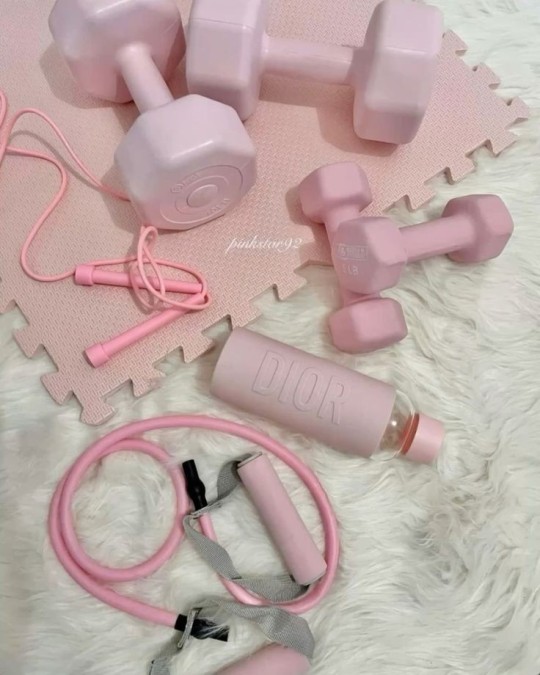
Updated Workouts 🎀
I have been out of the gym for so long. My schedule last semester did not allow it, but when I leave to Colorado in June, I'll be staying somewhere that has its own little gym, and next semester I'll have more access to the university gym as well. I've been doing at home workouts lately! Here's how I structure my workouts throughout the week, and some extra info about my current fitness!
🩷 Monday
Pilates Legs Youtube Workout(s)
🩷 Tuesday
Pilates Abs YouTube Workout(s)
🩷 Wednesday
Morning Yoga YouTube Workout
Pilates Legs/Pilates Glutes YouTube Workout
🩷 Thursday
Full Body Pilates YouTube Workout
🩷 Friday
Full Body Pilates YouTube Workout
🩷 Saturday
Morning Pilates YouTube Workout OR
Morning Yoga YouTube Workout
🩷 Sunday
Wake Up Yoga YouTube Workout
Yoga For Flexibility Workout
So, as you can see, I currently follow YouTube pilates workouts. I will make a list of my favorite workout youtbers on my main blog soon! I prefer low impact workouts at the moment but will switch it up a bit once I am in Colorado.
💕 Some extra stuff for my fitness:
I try to walk 5k to 10k steps a day, whether that be going outside or doing a walking workout in my bedroom
I do all of my workouts in the morning almost right after i get up in the morning. It eliminates obstacles and helps me do something active during the day
I am going to add more stretching into my routine, especially for my legs. I have pretty stiff muscles, and as someone who'd love to be able to do the spilts, I need to start stretching.
I have a foam roller, but it isn't one of the ones with the bumps on it that really helps the muscles, and I'm going to buy one as soon as possible.
I also am going to start using my massage gun on my legs because I've been so sore and again, stiff, and I think it'll be so useful to just use it on my legs at night. It might even help me sleep better.
Sleep!! I have been sleeping 6 to 8 hours a night consistently, and it's so nice. I feel like I can function so much better, and on the days I get closer to 7 hours of sleep, I feel so good when I wake up and can really get to my morning workouts.
I've switched up my diet a bit and eat healthier (in a sustainable way), and it's also helped me with my fitness too! it really makes a difference with what you put in your body! Food is fuel and food is great!
Always open to fitness and health related questions! Please don't forget I am 3 years into my nutrition and dietetics degree, as well as minoring in psyc and exercise science (also have a 2nd major in finance, but that's irrelevant to health). I also research health and fitness topics for fun. I'm not saying I'm the most credible whatsoever, but I do have some idea of what I'm talking about and am always open to questions or even advice you could give me!
til next time lovelies 🩷
#clean girl#coquette girl#feminine energy#girl blogger#becoming that girl#wonyoungism#pink pilates princess#that girl#it girl#it girl energy#that girl energy#pink blog#pilates aesthetic#pink moodboard#pink aesthetic#pilates tips#pink pilates girl#green juice girl#clean girl aesthetic#wonyoung aesthetic#health and fitness#self love#student life#university student#college student#self improvement#high value woman#self care tips#healthy habits#pilates girl
141 notes
·
View notes
Text
New Body — 180 Days to a Stronger, More Energetic You
In six months, you can completely transform not just how your body looks, but how it feels and functions. A healthier, more energized body is not about quick fixes but about building a lifestyle that you love and can sustain. Over the next 180 days, you’ll focus on cultivating habits that make movement feel rewarding, eating nourishing meals that fuel your goals, and creating a routine that’s about feeling good as much as it is about progress.

The first month is about setting the stage. Start by prioritizing consistency over intensity. Commit to showing up for yourself 3-4 times a week for workouts, gradually increasing to 5-6 days. Focus on compound movements—exercises like squats, lunges, push-ups, and rows that target multiple muscle groups and build a strong foundation. Pair these with low-impact cardio such as walking, cycling, or swimming. A 20–30 minute session is enough to get your body moving and spark energy.

In addition to workouts, reassess your nutrition. Don’t crash diet or over-restrict; instead, aim to balance your meals with lean proteins, complex carbohydrates, healthy fats, and plenty of vegetables. Think salmon with quinoa and roasted broccoli, or a hearty grain bowl with chickpeas, avocado, and greens. Start drinking more water throughout the day—hydration is crucial for energy and recovery.
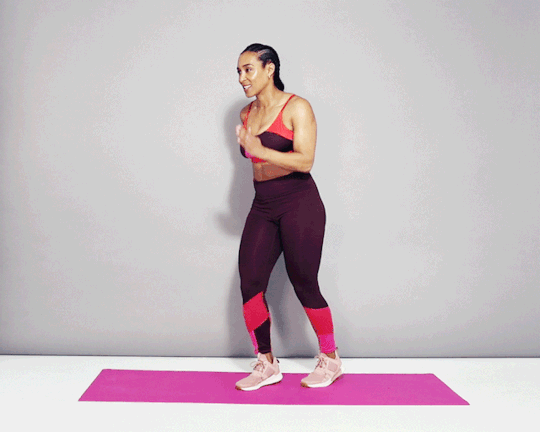
Month two is about building momentum. By now, your body is adjusting, and your workouts feel less daunting. Add some structure to your routine by following a progressive strength-training program. Dedicate specific days to different muscle groups, such as legs, arms, and core. Incorporate short bursts of high-intensity interval training (HIIT) into your cardio for an added challenge. For example, alternate 30 seconds of sprinting with one minute of walking for 10-15 minutes.

To stay energized, prioritize rest and recovery. Introduce active recovery days with yoga, stretching, or leisurely walks to reduce soreness and prevent burnout. Start listening to your body and recognizing the difference between pushing through discomfort and respecting the need for rest.

In months three and four, you’ll notice significant changes in your stamina, strength, and mindset. This is when you start to feel that magnetic pull to move your body—not out of obligation, but because it feels good. Challenge yourself further by adding variety to your workouts. Explore pilates, boxing, dance classes, or outdoor hikes. Keep strength training at the core of your routine, progressively increasing the weights you lift and experimenting with new moves like deadlifts or pull-ups.

If you’re feeling stuck or less motivated, switch up your workout playlist, invest in stylish activewear, or find a workout buddy. Surround yourself with positive reinforcement—remind yourself why you started and focus on how far you’ve come, not how far you have to go.

On the nutrition side, tune into your body’s hunger and energy cues. Pay attention to portion sizes, and don’t be afraid to treat yourself occasionally without guilt. A balanced diet includes room for indulgences—it’s what makes healthy eating sustainable. Add variety to your meals by experimenting with recipes, seasonal produce, and flavorful spices that make cooking exciting.

The final two months are about creating a lasting lifestyle. Your new routine will now feel like second nature. Your energy levels are steady, and your workouts no longer feel like a chore—they’re a source of pride and enjoyment. At this stage, fine-tune your goals. Maybe you want to focus on building more muscle definition, improving flexibility, or increasing your endurance. Tailor your workouts to reflect those aspirations.

During these months, pay attention to your mental fitness as well. Practice gratitude for your body—not just for how it looks, but for all it does for you. Incorporate mindfulness into your routine by meditating for five minutes after workouts or journaling about how movement and nutrition make you feel.

Celebrate your six-month milestone by reflecting on how much you’ve grown. Your “new body” isn’t just about physical transformation—it’s about how you feel in your skin, how you show up in your life, and the energy you bring to the things you love. This is a journey that doesn’t end at six months; it’s a foundation for a healthier, more vibrant life. Embrace it, enjoy it, and keep moving forward.
#ambitious women#beautiful women#glow society#beauty#the glow society#fit beauty#health#self love#self improvement#self care#self development#self discipline#self worth#self awareness#self reflection#self empowerment#self esteem#wellness#wellnessjourney#wellness girl#mental wellness#corporate wellness programs#wellbeing#health and wellness#womens#working out#workout#wealth#women#woman
11 notes
·
View notes
Text
Yoga for Weight Loss: Can Yoga Help You Shed Extra Kilos?
Yoga for Weight Loss: Can Yoga Help You Shed Extra Kilos?
Although yoga is frequently linked to flexibility and relaxation, it can also be a useful weight-loss aid.
Yoga offers a sustained and all-encompassing method of losing excess weight while enhancing general well-being, in contrast to intense exercise.
This blog discusses the greatest yoga poses for burning calories, how yoga helps people lose weight, and how to get the most out of your workouts.

How Can Yoga Aid in Losing Weight?
Yoga promotes weight loss by enhancing metabolism, encouraging awareness, and encouraging physical activity. Among the main advantages are:
Enhanced Calorie Burn: Power yoga and vinyasa are dynamic forms that increase heart rate and burn calories.
Increased Metabolism: By promoting hormonal balance and digestion, some poses raise metabolic rate.
Muscle Toning: By strengthening muscles, holding yoga poses improves fat burning.
Decreased Stress and Emotional Eating: By lowering hormones that cause stress like cortisol, yogic mindfulness helps people avoid gaining weight through stress-induced eating.
Better Digestion: Long breaths and twisting positions promote digestion and detoxification.
Improved Sleep: Yoga helps control sleep patterns, which is important for weight loss.
The Greatest Yoga Pose for Losing Weight

1. Surya Namaskar, or Sun Salutations
A vigorous sequence that improves flexibility, burns calories and works the entire body.
Take a deep breath, lift your arms above your head, and stand erect.
Breathe out and stoop to touch the ground.
Lower yourself onto a plank, then turn into an upward-facing dog.
Return to standing after pushing back into downward dog.
Do 10–12 rounds again.
2. Navasana (boat pose)
Helps to improve digestion, balance, and core strength.
Raise your feet off the floor, sit with your legs out in front of you, and use your sit bones for balance.
Maintaining a straight back, extend your arms forward.
Repeat three to five times while holding for 20 to 30 seconds.
3. Utkatasana or chair pose
Increases stamina, strengthens the core, and tones the thighs.
As though you were sitting in an invisible chair, place your feet together, bend your knees, and drop your hips.
Hold your arms out in the air for 30 to 45 seconds.
4. Phalakasana, or Plank Pose
Increases overall stability and strengthens the core.
Maintaining your body in a straight line, perform a push-up.
Hold for 30 to 60 seconds after engaging the core.
5. Virabhadrasana II, or Warrior II
Strengthens the core, increases endurance, and tones the legs.
Place your feet wide apart, bend your front knee, and turn one foot outward.
Hold for 30 seconds on each side while extending your arms parallel to the floor.
6. Parairittta Utkatasana, or Twisting Chair Pose
Promotes digestion, tones abs, and speeds up metabolism.
Place your feet wide apart, bend your front knee, and turn one foot outward.
Hold for 30 seconds on each side while extending your arms parallel to the floor.
7. Setu Bandhasana, or Bridge Pose
Helps maintain hormonal balance and strengthens the lower body.
While lying on your back, raise your hips toward the ceiling and bend your knees.
Hold for 20 to 30 seconds, then let go.
8. Bhujangasana (Cobra Pose)
Strengthens the back and enhances digestion.
Press your hands onto the floor, raise your chest, and lie on your stomach.
Hold for 15–30 seconds.
Research on Yoga's Effect on Weight Loss
According to several studies, yoga can help people lose weight by lowering stress, enhancing digestion, and promoting physical activity.
According to a study that was published in the Journal of Alternative and Complementary Medicine, people who consistently practiced yoga for 12 weeks lost a substantial amount of weight in comparison to those who did not exercise at all.
In another Harvard study Yoga practitioners typically have healthier eating habits and a lower body mass index (BMI), according to research from medical school.
Mindful Eating and Yoga
People who practice yoga become more self-aware and mindful of their eating patterns. Yoga as a mindfulness practice can benefit:
Cut down on harmful eating desires.
Encourage portion control.
Promote the consumption of healthier foods.
Yoga Practice Every Day to Lose Weight
If you want to lose weight, do this yoga practice every day:
Warm-up: Begin with mild stretches and pranayama breathing techniques.
Main Workout: Do 10 rounds of Sun Salutations and asanas such as Plank Pose, Chair Pose, and Boat Pose.
Cool Down: To relax your muscles, end with Child's Pose and Cobra Pose.
Meditation: Spend five to ten minutes meditating to close up your session.
How Can Yoga Help You Lose Weight the Most?
Be Regular: For observable effects, do yoga at least five times a week.
Combine with Cardio: To improve fat burning, including cycling, walking, or jogging.
Maintain a Balanced Diet: Steer clear of processed foods and consume entire foods, lean proteins, and healthy fats.
Engage in Mindful Eating: Yoga promotes greater awareness of hunger signals, which helps people avoid overindulging.
Maintain Hydration: Adequate hydration facilitates digestion and increases metabolism.
Incorporate Breathing Techniques and Meditation: Pranayama and meditation can help prevent weight gain brought on by stress.
Success Stories: Actual Individuals Who Used Yoga to Reduce Weight
Yoga has been used to help many people lose weight.
One woman, for example, shed 15 kg in six months after implementing mindful eating and regular yoga into her routine.
Another person reported that they lost two dress sizes in a matter of months after beginning Power Yoga and Vinyasa Flow.
These actual cases show that yoga can be a useful weight loss strategy when paired with a healthy lifestyle.
In conclusion
Yoga offers mental, emotional, and physical advantages, making it an effective weight loss method.
You can lose weight and improve your general health in a sustained way by doing the proper poses, staying consistent, and leading a healthy lifestyle.
Consider enrolling in Ekam Yoga Classes for an organized and supervised yoga experience.
Skilled instructors may assist in customizing your practice to meet your weight reduction objectives. Begin now to see the change for yourself!
3 notes
·
View notes
Text
Real meditation is a dirty thing. It is a dirty thing because it needs you to plunge directly into the dirt and filth of your daily life. Artificial meditation of the one-hour type is a very clean thing.
Having spent the entire day in the—pardon me the usage—gutter of common life, we come back to the one clean holy place that we have artificially reserved for meditation, take a shower, use some incense, play some mystical music, and sit down to bathe in the divine. What nonsense!
Real meditation will be tricky, dirty, and quite hurtful. It involves seeing things for what they really are. It involves acknowledging your own face.
Real meditation is about showing a mirror to yourself.
False meditation of the kind that is very popular is all about putting up the most artificial, the most made-up, and the holiest face possible. Look at people when they are meditating. Is that them? Seriously? Look at people when they are strutting around with their yoga mats, and sitting in this āsana or that āsana. Is that them?
Returning from his yoga class, he seriously relishes a piece of chicken leg. In fact, the chicken feels even more delicious after the yoga class! Having meditated, he immediately sets off for his shop—and he is a champion black-marketer. And meditation helps him in staying calm and quiet while he is fleecing the entire world.
What kind of meditation is this? This is meditation just to sustain the ego, right?
Real meditation is dangerous. Therefore, real meditation is neither practiced nor taught. And obviously, it cannot sell.
Real meditation is a daylong, lifelong activity. It is a love affair. You cannot be a lover one hour a day, or can you be? But you can be a customer of flesh one hour a day.
— Acharya Prashant
11 notes
·
View notes
Text
Creative Ways to Work Out Without a Gym (Yes, Even in Your Dorm)
Let’s be real: gym memberships can be expensive, and who even has time to go when you’re drowning in assignments? But guess what? You don’t need a fancy gym to get fit. With a bit of creativity (and your dorm furniture), you can turn your tiny space into your personal workout zone.
Here are some fun, no-gym-needed workout ideas to get you moving.
1. Chair Dips – Your Dorm Chair’s Hidden Talent
Got a sturdy chair? Perfect. Sit on the edge, place your hands beside your hips, and slide forward so your butt’s off the seat. Bend your elbows to lower yourself, then push back up. Boom—instant tricep burner.
Pro Tip: No wheels on the chair, please. Let’s avoid accidental wipeouts.
2. Laundry Bag Deadlifts
Your laundry isn’t just sitting there for no reason. Fill your bag with clothes and use it as a weight for deadlifts. Just stand tall, bend at your hips, and lift that sack like you’re in the Dorm Olympics.
3. Bed Frame Push-Ups
Too hard on the floor? Use the edge of your bed for incline push-ups. Need more of a challenge? Flip it around and do decline push-ups with your feet on the bed.
4. Stairway to Cardio Heaven
If your dorm has stairs, you’ve got the perfect workout tool. Sprint up and walk down for 10-15 minutes. Bonus points if you carry a backpack for extra resistance.
5. Textbook Bicep Curls
You’re not just lugging those heavy textbooks around for class. Grab one (or two if you’re ambitious) and do bicep curls while you binge-watch your favorite show. Study and swole vibes.
6. Blanket Sliders for Core Work
Got a smooth floor? Use a folded-up blanket (or paper plates if you're fancy) as sliders. Put them under your feet and try mountain climbers, plank jacks, or hamstring curls. Your abs will hate you, but they’ll thank you later.
7. Wall Sits While You Cram
Kill two birds with one stone by doing wall sits while you study. Sit against the wall like you’re in an invisible chair and hold it for as long as you can. Bonus: It’s great for your legs and your focus.
8. Backpack Weight Training
Fill your backpack with books or water bottles and use it for squats, lunges, or even as a makeshift kettlebell. Just make sure it’s zipped up—no surprise textbook explosions, please.
9. Dance Party Cardio
Turn up your favorite playlist and have a dance-off in your dorm. It’s fun, burns calories, and lifts your mood. Plus, it’s free entertainment for your roommates.
10. Yoga with a Towel
No yoga mat? No problem. Use a towel as your mat and follow a quick yoga or stretching routine on YouTube. It’s great for stress relief and helps keep your body flexible.
Final Thoughts
You don’t need a gym to stay active—just a bit of imagination and maybe a good Spotify playlist. Whether you’re lifting laundry bags or having a dorm dance party, the key is to move your body in a way that feels fun and sustainable.
Got any other creative workout hacks? Share them below—we’re all trying to stay fit together! 💪

3 notes
·
View notes
Text
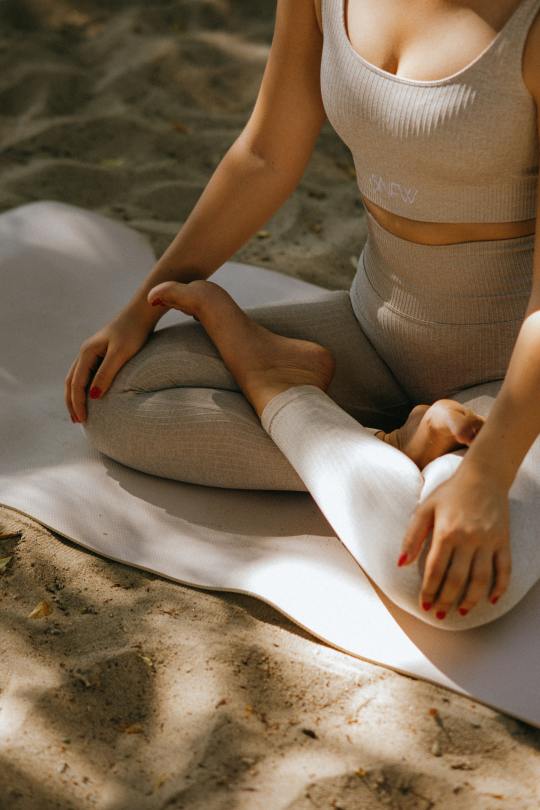
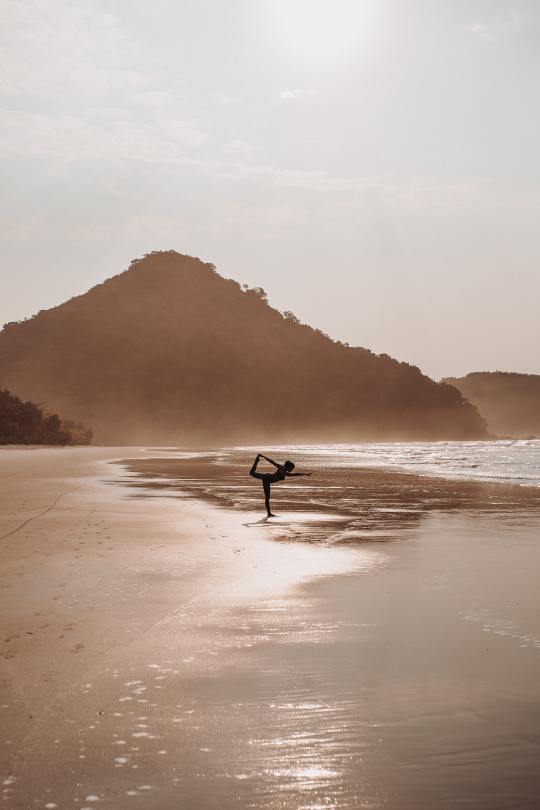
yoga tips!
anything I thought may help a beginner 💗
✨benefits of regular practice of yoga:
improved strength, endurance, flexibility
lower anxiety+increases in serotonin levels
decrease risk of heart attack and stroke
weight loss (both directly and bc reducing other stressors makes it easier to lose weight)
reduce chronic pain and improve funtional mobility (when combined with meditation)
improved sleep (alternative treatment for insomnia)
source: literature review of many studies
✨for your first class:
don’t buy ANYTHING. i get it, there are a million cute leggings, tops, mats, blocks, bolsters, gym bags, water bottles…but you don’t need any of it to practice yoga. at least wait until you’ve attended a month so you know you enjoy it
wear: any comfy clothes you can stretch and move easily in or your favorite workout clothes (leggings, sweats, joggers, t shirt, tank top, sports bra it all works), socks 🧦
(if you’re doing hot yoga, you may prefer looser clothes)
try to go in person if possible. youtube is great once you understand the poses but those first few times your posture improves so much with instruction!
bring: a water bottle and hand towel (put this on the mat as a barrier if instructed to put your face on the mat)
come five min early to lay out a borrowed mat, straps, blocks (or bolsters, blankets if doing restorative), water bottle, towel
remove your shoes 👟
participate to the best of your ability, its not a competition
try the meditation, even if it seems awkward at first
✨now that you practice regularly
try out a new style if you want a greater challenge (or gentler approach)
keep an eye out for pop-up events (often ‘yoga in the park/square/beach’ when there’s good weather) to mix it up
if you’re ready to buy some gear the good trade wrote about a range of environmentally sustainable ♻️, ethically produced activewear (x), mats and other tools (don’t buy through their links if you don’t want them to get commission, just google it yourself)
good luck on your yoga journey!
source: Tatiana Danelli and KoolShooters via pexels
#yoga#self care#glow up#healthy lifestyle#self love#that girl#dream girl#girl blogger#yogachallenge#that girl aesthetic#fitness#lifestyle#self improvement#meditation#summer 2023
25 notes
·
View notes
Text
What Are the Benefits of Yoga for a Person's Physical Health?
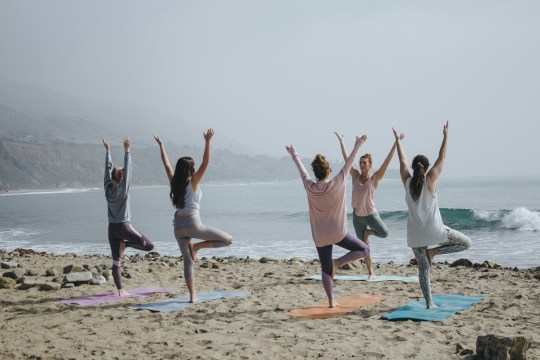
Yoga, an ancient practice with roots in India, has transcended its spiritual origins to become a mainstream form of exercise. While many associate yoga with flexibility and pretzel-like poses, its benefits extend far beyond that. Yoga offers a well-rounded approach to physical health, promoting strength, balance, and a range of other positive outcomes. Whether you're a seasoned athlete or a complete beginner, yoga can be a valuable addition to your fitness routine.
Building Strength and Muscle Tone
Yoga postures, or asanas, engage various muscle groups throughout the body. Holding these poses for sustained periods isometrically strengthens the muscles, leading to improved tone and definition. Unlike weightlifting, which can isolate specific muscle groups, yoga works the entire body in a more holistic manner. This is particularly beneficial for beginners, as it helps build a foundation of overall strength.
Strength Benefits:
Improved core strength, leading to better posture and stability.
Increased upper body strength, beneficial for daily activities.
Stronger lower body muscles can improve balance and gait.
Many yoga styles, such as Vinyasa and Ashtanga, incorporate movement sequences that build strength and endurance. These dynamic flows can be a great way to challenge yourself and build a stronger physique.
Enhancing Flexibility and Range of Motion
One of the most well-known benefits of yoga is its ability to improve flexibility. Yoga poses target tight muscles and connective tissues, gradually increasing their range of motion. This not only improves your ability to perform the poses themselves but also enhances your overall mobility and reduces the risk of injury in daily activities.
Flexibility Benefits:
Increased range of motion in the shoulders, hips, and spine.
Improved ability to bend and twist, enhancing daily activities.
Reduced muscle stiffness and tension.
Yoga for beginners focuses on gentle stretches and modifications, ensuring you don't push yourself beyond your limits. As you progress, you'll find yourself becoming more flexible and able to explore more challenging poses.
Improving Balance and Coordination
Yoga poses often require you to maintain balance on one leg or with different parts of your body in contact with the ground. This constant focus on balance translates to improved stability in everyday life, reducing the risk of falls, especially for older adults. Additionally, yoga sequences that involve transitioning between poses enhance coordination and proprioception, or your body's awareness of its position in space.
Balance and Coordination Benefits:
Increased stability and reduced risk of falls.
Improved proprioception for better body awareness.
Enhanced coordination for daily activities and exercise routines.
Many yoga classes incorporate balancing poses, even for beginners. These poses can be modified with props like blocks or straps to make them more accessible. As you gain confidence, you can progress to more challenging balancing exercises.
Maintaining a Healthy Spine and Posture
Yoga emphasizes proper alignment throughout the practice. Holding poses with a straight spine and engaged core muscles strengthens the back and improves posture. This can alleviate back pain caused by slouching or poor posture, promoting a healthier spine and better overall body mechanics.
Spine and Posture Benefits:
Strengthened core muscles for better spinal support.
Improved posture, reducing back pain and discomfort.
Increased flexibility in the spine for a better range of motion.
Yoga for beginners often focuses on poses that promote proper spinal alignment. As you progress, you can explore more challenging backbends and inversions that further strengthen and improve spinal health.
Benefits Beyond the Physical: Stress Reduction and Relaxation
While the physical benefits of yoga are significant, its impact extends beyond the body. Yoga incorporates breathing exercises (pranayama) and meditation techniques that promote relaxation and stress reduction. By focusing on your breath and calming your mind, yoga can help manage stress hormones, leading to a feeling of well-being and improved overall health.
Stress Reduction and Relaxation Benefits:
Reduced stress hormones like cortisol.
Improved sleep quality.
Enhanced sense of well-being and relaxation.
Many yoga classes incorporate periods of relaxation and meditation, even for beginners. These practices can be a valuable tool for managing stress in everyday life.
Yoga for Everyone: Modifications and Accessibility
One of the beauties of yoga is its adaptability. Yoga poses can be modified for all fitness levels and physical limitations. Whether you're a beginner, recovering from an injury, or have limited mobility, there's a yoga practice for you.
Many yoga studios offer beginner-friendly classes that focus on foundational poses and proper alignment. Additionally, there are numerous online resources and yoga for beginners programs that cater to specific needs and limitations.
2 notes
·
View notes
Text
What is Yoga?
By Lauren Tober | May 9, 2019 | Yoga + Meditation
When I tell people I teach iRest Meditation, they often ask me if I teach yoga as well.
The answer is YES! iRest Meditation IS yoga.
But I understand the confusion. While yoga is an ancient contemplative practice, it’s also a multi-million dollar industry that largely promotes advanced physical postures and a skinny body as the ultimate goal of yoga. But yoga is more than just downward dogs and sun salutations.
Commentaries of the meaning of the word yoga vary from union, to attaining what was previously unattainable, to directing all our focus on the activity in which we’re engaged, to being one with the divine.¹

Patañjali’s Yoga Sūtras
The meaning of yoga is presented concisely in the Patañjali’s Yoga Sūtras, a text that is considered by many to be the heart of yoga.¹
While little is known about Patañjali, it is widely accepted that he was an authority on yoga, and complied and systemised the vedic knowledge of the time into sūtras that could be handed down orally from teacher to student, in a concise way that would make it possible to remember. It is estimated that Patañjali wrote the sūtras around the second century C.E. and that Vyāsa wrote the original commentary on the sūtras, Yoga-Bhâshya, around the fifth century C.E.²
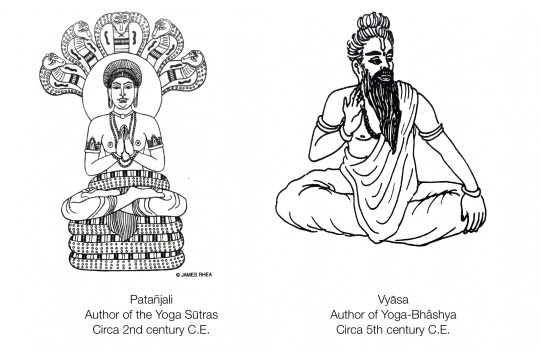
Yogaś Citta Vṛtti Nirodhaḥ
Patanjali’s answer to this question ‘what is yoga?’, is in chapter one, verse two of the Yoga Sūtras:
yogaś citta vṛtti nirodhaḥ (I.2)
Different commentators have interpreted this sutra in subtly different ways.
T.K.V. Desikachar wrote:
“Yoga is the ability to direct the mind exclusively toward an object and sustain that direction without any distractions.”⁴
B.K.S. Iyengar wrote:
“Yoga is the cessation of movements in the consciousness.”⁵
Edwin F. Bryant wrote:
“Yoga is the stilling of the changing states of mind.”⁶
Georg Feuerstein wrote:
“Yoga is the restriction of the whirls of consciousness.”⁷
Judith Hanson Laster wrote:
“Yoga is the state in which the agitations of consciousness are resolved.”⁸
Richard Miller wrote:
“Yoga is when we knowingly live as the realization of unconditioned Stillness, whether thought is in movement or stillness.”⁹
However you interpret this most influential sūtra about the meaning of yoga, it’s clear that the yoga is related to understanding the mind, and has nothing at all to do with having a slim and flexible body that looks sexy in expensive lycra leggings.
REFERENCES
Desikachar, T.K.V. (1995). The Heart of Yoga. Rochester, Vermont, US: Inner Traditions International.
Feuerstein, Georg. (2002). The Yoga Tradition. Delhi, India: Bhavana Books and Prints.
Feuerstein, Georg. (2002). The Yoga Tradition. Delhi, India: Bhavana Books and Prints (p.311)
Desikachar, T.K.V. (1995). The Heart of Yoga. Rochester, Vermont, US: Inner Traditions International (p.149).
Iyengar, B.K.S. (2002). Light on the Yoga Sūtras of Patañjali. London, UK: Thorsons (p.50).
Bryant, Edward. (2009). The Yoga Sūtras of Patañjali. New York, US: North Point Press (p.10).
Feuerstein, Georg. (2002). The Yoga Tradition. Delhi, India: Bhavana Books and Prints (p. 286).
Lasater, Judith Hanson. (2014). The Ten Most Important Sutras.
Miller, Richard. (2013). Level 1 Training Integrative Restoration (version 4.6c). San Rafael, CA, US: Anahata Press (p. xxiii).
#yoga#lord shiva#yoga citta#asana#kundalini#hatha#ashtangavinyasa#mind over matter#patanjali#ilyengar#vyasadeva#yogeshwar
4 notes
·
View notes
Text
WOMEN YOGA WEAR

Women's yoga wear is apparel that is made exclusively for doing yoga. Leggings, yoga trousers, blouses, sports bras, and occasionally coats or hoodies are typical components. Yoga clothing is often designed from elastic, breathable materials like polyester, spandex, and cotton to allow for complete range of motion while performing yoga poses. Some companies also provide sustainable or eco-friendly products created from recycled materials. Additionally, specific characteristics like odor-resistance, quick-drying, and moisture-wicking are frequently added to improve comfort during strenuous activities. Women's yoga clothing frequently features stylish patterns and designs that cater to individual style preferences.
3 notes
·
View notes
Text
365 Days of Writing Prompts: Day 227
Adjective: Lost
Noun: Warrior
Definitions for those who need/want them:
Lost: unable to find one's way, or not knowing one's whereabouts; unable to be found; (of a person) very confused or insecure or in great difficulties; denoting something that has been taken away or cannot be recovered; (of time or an opportunity) not used advantageously, or wasted; having perished or been destroyed; (of a game or contest) in which a defeat has been sustained
Warrior: (especially in former times) a brave or experienced soldier or fighter; any of a number of standing poses in yoga in which the legs are held apart and the arms are stretched outwards
#today has been a long and busy day#and good for the most part#and i really like this prompt#again there is a lot of versatility here#i particularly like the idea of a 'warrior' who is done with battle or a war or something of the like#and finds themself 'lost' and not knowing what to do with themself as being a 'warrior' is all they know#i think that may end up being what i write about#but we shall see#thanks for reading#writing#writer#creative writing#writing prompt#writeblr#trying to be a writeblr at least
2 notes
·
View notes
Text

🎉 Say hello to Aprilluck - your new go-to for all things athleisure! 🎉
We at Aprilluck believe that everyone deserves to feel comfortable, confident, and chic - even when breaking a sweat. 💪 Our athleisure wear combines the best of style, performance, and sustainability, so you can feel good about feeling good.
But what sets Aprilluck apart? 🌟 Our commitment to customization and wholesale. That's right - you can now create your very own athleisure style or stock your retail shelves with our high-quality, eco-friendly gym wear.
Browse our diverse range of athletic wear, from our 'yoga clothes for women' collection to our 'workout leggings women' can't get enough of. Or explore our 'active wear sets', 'gym wear ladies' love, and even our 'relaxing pants' for those well-deserved rest days. 🧘♀️
So whether you're into yoga, running, gym workouts, or just love the comfort and style of athleisure, Aprilluck has you covered.
Visit www.aprilluck.com now to step up your fitness game and make your workout wardrobe truly your own. 🌐
Aprilluck #AthleisureWear #WorkoutInStyle #YogaWear #ActiveWear #SustainableFashion #CustomAthleticWear #Wholesale
2 notes
·
View notes
Text
Stress - Free Sports: A Guide to Releasing Pressure Through Exercise

In today’s fast-paced world, stress has become a constant companion, impacting both mental and physical health. Fortunately, sports offer a powerful escape—a way to channel tension into positive energy and restore balance. Whether you’re a seasoned athlete or a casual mover, incorporating the right exercises and tools can transform your stress management routine. This guide explores how sports like running and cycling can become your stress-release allies, with the help of a stress tracking watch to optimize your journey.
1. The Science of Stress Relief Through Exercise
Exercise isn’t just about physical fitness; it’s a natural stress buster. When you move, your brain releases endorphins, the “feel-good” hormones that combat anxiety and boost mood. Additionally, activities that elevate your heart rate improve cardiovascular health, reduce cortisol (the stress hormone), and enhance mindfulness—creating a holistic sense of well-being.
2. Top Stress-Relieving Sports to Try
A. Running: Pound the Pavement, Ease the Mind
Why It Works: The rhythmic motion of running acts as a moving meditation, allowing you to focus on your breath and stride. A 30-minute jog can lower stress levels by up to 30%, according to the Journal of Sports Medicine.
Tips for Stress-Free Runs:
Mindful Pacing: Run at a comfortable pace (60–70% of max heart rate) to stay present and avoid overexertion.
Nature Routes: Swap treadmill runs for outdoor paths—research shows green spaces amplify stress relief by 50%.
B. Cycling: Pedal Away Tension
Why It Works: Cycling combines rhythmic movement with low impact, making it ideal for joint-friendly stress release. The repetitive leg motion calms the nervous system, while scenic rides (think coastal roads or forest trails) provide a mental escape.
Tips for Stress-Free Rides:
Group Rides: Join a cycling club to blend social connection with exercise—camaraderie boosts oxytocin, the “bonding hormone.”
Interval Breaks: Alternate 10 minutes of easy pedaling with 2 minutes of gentle sprints to keep the mind engaged and stress at bay.
C. Yoga and Pilates: Move with Intention
Why It Works: Slow, controlled movements paired with deep breathing activate the parasympathetic nervous system, reducing the “fight or flight” response. A 2022 study found regular yoga decreases stress hormones by 25% in just 8 weeks.
Tips for Stress-Free Sessions:
Focus on Breath: Use “box breathing” (4-4-4-4 inhale-hold-exhale-pause) during poses to deepen relaxation.
Gentle Poses: Child’s Pose, Forward Fold, and Legs-Up-the-Wall are excellent for releasing physical and mental tension.
3. The Role of a Stress Tracking Watch
A stress tracking watch acts as your personal wellness coach, providing real-time data to manage pressure effectively:
Heart Rate Variability (HRV): A high HRV indicates a relaxed nervous system; use it to adjust workout intensity (e.g., switch to yoga if stress levels spike).
Guided Breathing Sessions: Many watches offer 1–5-minute breathing exercises to calm the mind mid-day.
Recovery Insights: Track sleep quality and resting heart rate to ensure your body rebounds fully, preventing burnout.
4. Incorporating Stress Relief into Your Routine
A. Morning Movement Rituals
Start days with 10–15 minutes of light exercise—stretching, a quick jog, or a cycling commute—to set a stress-resistant tone.
B. Lunchtime Reset
Use lunch breaks for a short walk or desk stretches. Even 10 minutes of exercise boosts focus and reduces afternoon slumps.
Evening Wind-Down
End days with gentle activities like restorative yoga or a leisurely bike ride to transition from “doing” to “being.”
5. Choose What Feels Good
The key to stress-free sports is enjoying the process, not perfection:
Experiment: Try different activities (rock climbing, dancing, swimming) to find what sparks joy.
Set Flexible Goals: Aim for “consistency over intensity”—30 minutes of exercise 5 days a week is more sustainable than occasional marathons.
Train Your Body, Calm Your Mind
Sports are more than workouts; they’re a sanctuary for stress release. By pairing activities like��running and cycling with a stress tracking watch to monitor progress, you create a powerful system for managing life’s pressures. Remember, the best stress-relief sport is the one that makes you feel empowered and present. So lace up, pedal out, or roll out your mat—your mind and body will thank you for the gift of movement.
Prioritize your well-being—start the journey today with a stress tracking watch designed for your active life. https://ezonwatch.com
0 notes
Text
Top quality Yoga Leggings Manufacturing
At Thygesen Textile Vietnam, we specialize in crafting high-quality yoga leggings that offer the perfect balance of flexibility, durability, and comfort. As an experienced OEM/ODM manufacturer, I provide full-package solutions—from fabric selection and custom printing to packaging—tailored to meet each brand’s unique needs.
Sustainability is at the core of my manufacturing process. I offer a variety of eco-friendly materials such as organic cotton, Tencel, and recycled nylon, all meeting global certifications like GOTS and OEKO-TEX. With a production capacity of 800,000 pieces per month and certified ethical practices (SA8000, WRAP), I ensure both scalability and integrity.
I keep clients fully informed throughout production, emphasizing transparency, responsibility, and top-tier service.

Read the full article here: https://thygesenapparel.com/yoga-leggings-manufacturing
0 notes
Text
Why Every Active Woman Needs a Rash Guard This Summer
Why Every Active Woman Needs a Rash Guard This Summer
Summer is all about sunshine, waves, and having fun outdoors. But for active women, it’s also about being prepared and protected. Whether you're surfing, paddleboarding, swimming, or simply relaxing at the beach, wearing the right gear makes a big difference. This is where the rash guard for women becomes your new best friend.
What is a Rash Guard?
A rash guard is a type of athletic swimwear designed to protect your skin. Originally made for surfers, rash guards have now become essential for all types of water sports and beach activities. They are made from stretchy, lightweight materials that dry quickly and provide UV protection, keeping you safe from harsh sun rays, rough surfaces, and irritation caused by salt and sand.
Top Reasons to Wear a Rash Guard for Women This Summer
1. Sun Protection
One of the biggest reasons women choose rash guards is sun safety. Most women rash guards are made with UPF 50+ fabric, which blocks up to 98% of harmful UV rays. This is especially important for long days in the sun. Instead of constantly applying sunscreen, a rash guard covers your shoulders, arms, and back—giving you peace of mind and serious sun protection.
2. Comfort and Confidence
Ladies swim rash guards are designed to fit snugly while still being breathable and flexible. Whether you’re swimming laps or chasing waves, a good rash guard will move with you, not against you. It also gives you a bit of extra coverage, which can help you feel more confident and comfortable in your swimwear.
3. Protection Against Rashes and Irritations
The name “rash guard” says it all. These tops protect your skin from rashes caused by friction—whether it’s from your surfboard, bodyboard, or even saltwater rubbing against your skin. If you’ve ever experienced chafing during or after a swim, you know how painful it can be. A rash guard prevents that completely.
4. Great for All Activities
Rash guards are not just for surfers. Whether you're swimming, kayaking, snorkeling, or even jogging on the beach, a rash guard for women keeps you protected and cool. It’s also a great choice for moms running after kids at the pool or anyone who loves outdoor activities. You can even pair it with shorts or leggings for beach yoga!
5. Style Meets Function
Gone are the days when rash guards were just basic and boring. Now, there are so many styles, colors, and cuts to choose from. You can go for long sleeves, short sleeves, zip-up styles, or cropped designs. Women rash guards today are just as stylish as they are functional. Whether you like bold prints or solid colors, there's a design that fits your vibe.
6. Eco-Friendly Choices
Many modern ladies swim rash guards are now made from recycled materials like regenerated nylon or polyester made from plastic waste. Not only are these fabrics durable and high-quality, but they also help reduce your impact on the planet. Choosing sustainable swimwear is a small change that makes a big difference.
How to Choose the Right Rash Guard for You
When shopping for a rash guard, it’s important to consider a few things:
Sleeve Length: Long sleeves offer more coverage and sun protection, while short sleeves give more breathability.
Fit: Rash guards should be snug but not too tight. You want them to stay in place while you move.
Material: Look for stretchy, quick-drying fabric with UPF protection.
Design: Choose a color and print that makes you feel good and reflects your personal style.
Styling Tips for Rash Guards
You can wear your rash guard over your bikini or swimsuit. Some women even wear them with swim leggings or board shorts for extra coverage. For a casual beach day, pair your rash guard with denim shorts and flip-flops—it works just like a cute top! Want to go from beach to café? Just throw on a skirt or sarong, and you're ready.
Rash Guard Care Tips
To make your rash guard last longer:
Rinse it in fresh water after each use to wash away chlorine, salt, and sunscreen.
Hand wash with gentle soap.
Hang it to dry in the shade—avoid direct sunlight to prevent fading.
Don’t wring it out—this can stretch the fabric.
Where to Buy the Best Rash Guard for Women
Ready to upgrade your summer wardrobe? At August Society, we offer a collection of stylish, sustainable ladies swim rash guards that are made for movement. Whether you need long-sleeve coverage or a cropped look, we’ve got you covered—literally! Our rash guards are made from eco-friendly materials and are designed for women who love to stay active while looking good.
Our designs are soft, stretchy, and seriously cute. Plus, we use recycled fabrics that help keep oceans clean. So when you shop with us, you’re not only getting quality swimwear—you’re making a choice that supports the planet.
Conclusion
This summer, don’t settle for ordinary swimwear. Invest in a rash guard for women that offers sun protection, comfort, and style. Whether you’re an experienced surfer or just enjoy beach walks, women rash guards are a must-have. They're more than just a swim top—they're your shield against the elements and your partner in every beach adventure.
So suit up, stay safe, and enjoy every moment under the sun. Your summer starts with the perfect rash guard—and you’ll find it at August Society. Visit our website today to explore our full collection and find the gear that fits your lifestyle. Happy swimming!
#rash guard for women#women rash guards#women's swimwear#ladies swim rash guards#ecofriendlyswimwear#activeswimwear
0 notes